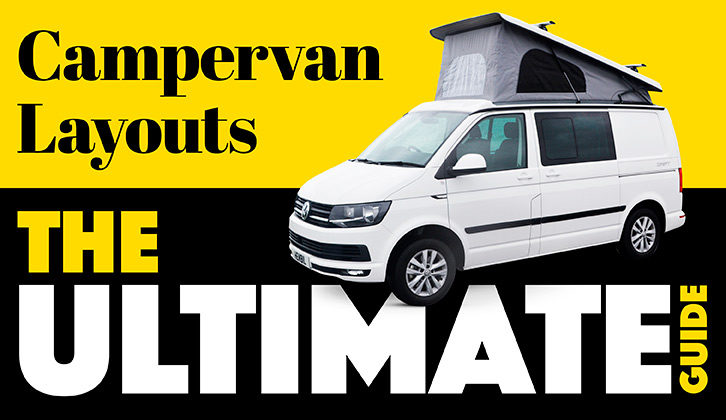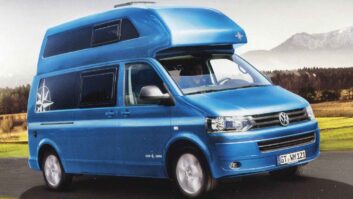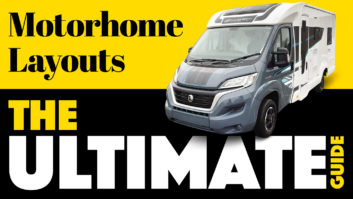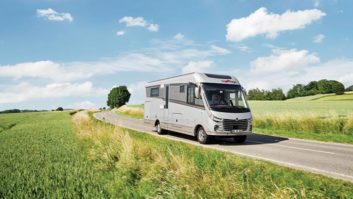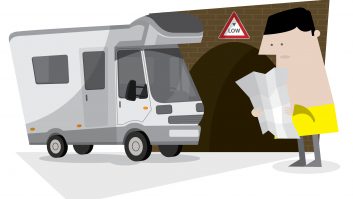Picking the right campervan layout will go a long way towards helping you get the most from your tours and having an enjoyable experience on the road.
Campervan layouts are different to the arrangements you get in motorhomes, due to the restrictions on the interior space and the types of touring they’re normally used for. We’re not just talking about ‘vans with raising roofs here either, but many smaller fixed-roof vehicles too.
A key step to identifying the right layout and picking the best campervan will be deciding exactly what you want from your vehicle. A good way to get an understanding of the different arrangements on offer will be to head to one of the big shows – here, manufacturers will be showcasing the latest models.
You could also try going to a dealership – they may be affiliated with a smaller number of manufacturers but they could give you suggestions you otherwise may not think of.
In this guide, we’ll be taking a look at the most common campervan layouts, as well as identifying who they’re good for and who should avoid them. You can also take a look at our round-up of the best campervan converters, where we reveal the standout converters working in the UK.
The most common campervan layouts are:
Rear bench, side kitchen

Also known as the Classic or VW style, this is the layout that the majority of traditional campervans have – especially those that date back to the 1960s.
This campervan layout gives you a bench that goes across the back of the vehicle, along with two or three travel seats.
You will normally be able to slide this forwards to make space for extra luggage in the rear. When it comes to turning in for the evening, a double bed can be made up, typically in the rock ‘n’ roll style, where you fold the base forwards and lower the back flat.
The kitchen equipment, such as the sink, water tanks, hob and oven (if it’s included) are all kept to one side of the ‘van. The same applies to the storage, with the possible exception of a locker underneath the seats.
Pros
- This is a practical arrangement. If you’re intending to use your campervan as a day-to-day vehicle, this layout works well. Some will have tinted windows too, meaning people can walk past it without even noticing it’s a campervan.
Cons
- If you want a washroom in your ‘van, it’s not the layout for you, as it basically precludes the possibility of having one. When it comes to a toilet, the best you’re getting is a Porta Potti.
Side Settee
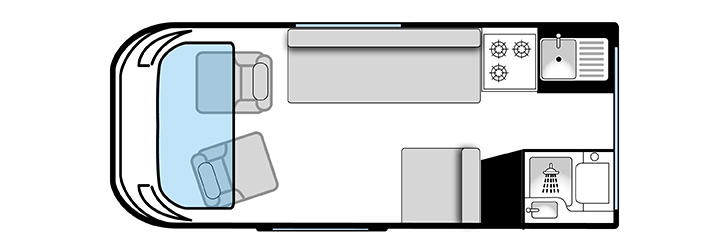
One of the great parts of touring is getting closer to nature, and that’s something this layout allows – in fact, we’d say it possibly encourages it more than any other.
After you’ve arrived on the site, all you need to do is roll back the door and you can then take in the scenery and watch the world go by.
Side-settee layouts often come with one forward-facing seat as well, which adds to sociability and means you can still use the camper as a day-to-day vehicle if you wish.
When it comes to sleeping, you’ll find either two single beds – one of which is made up by connecting the single rear seat to the passenger cab seat – or a double which involves rolling the settee forward.
At the rear of the camper, you’ll find plenty of space for luggage.
Pros
- If you want to sit back and take in the wonders of nature, this could be the campervan layout for you.
Cons
- Putting the beds together can be fiddly.
End kitchen / washroom
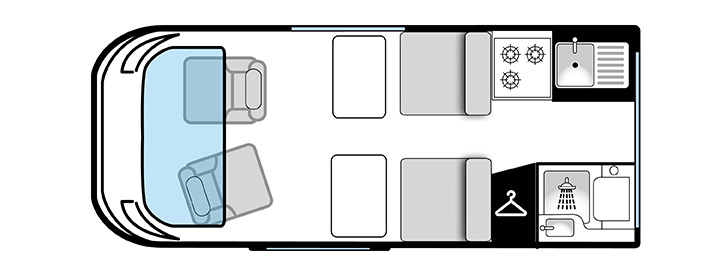
Campervans fitted with an end kitchen or an end washroom are becoming an increasingly common arrangement nowadays. In this layout, everything will be tucked away behind two forward-facing travel seats or a large bench.
In this time of campervan, you’ll normally find the end kitchen is L-shaped, with a hatchway out to the rear of the vehicle making it easy to serve anyone sitting outside. It’s also the type of arrangement that normally sees the roof raise at the rear, ensuring the chef has extra headroom, although we’d point out there’s still the top rear of the base vehicle to contend with.
An end washroom can normally be accessed from both inside and outside, a useful touch if you’re touring with a dog, as it allows you to easily hose them down when you’re back from a walk, should they get mucky.
Pros
- It provides a more luxurious touring setup
Cons
- You have to make the bed each night
If you liked this, why not read these:
- We see how the Auto-Sleepers Air and the Jöbl Kampa LE compare
- We take a look at the Benimar Benivan 122 and the Ford Nugget
If you’ve enjoyed reading this review, why not get the latest news, reviews and features delivered direct to your door or inbox every month. Take advantage of our brilliant Practical Motorhome magazine SUBSCRIBERS’ OFFER and SIGN UP TO OUR NEWSLETTER for regular weekly updates on all things motorhome related.
